Peter Rumsey
Can We Build Zero Emission Buildings?
On 11, Jan 2021 | In PEI Blog | By Peter
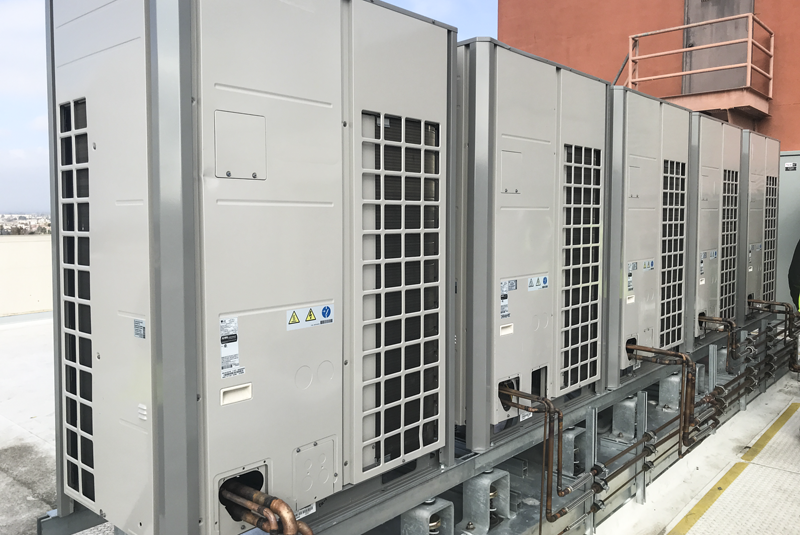
Variable refrigerant flow heat pumps of an all-electric HVAC system
Story at a glance:
- By the end of 2019 11 states and 160 cities had official goals to get 100% of their electricity from clean sources by 2050.
- Current typical HVAC systems can be replaced with alternative systems that use heat pumps for heating instead of gas.
- An Exelixis building in California shows the decarbonization potential.
What is building decarbonization?
Buildings in the US account for 40% of carbon emissions. And 80% of that is from electricity use; the remainder is from the combustion of fossil fuels for heating and other uses at the building.
As many states, utilities, and large corporations are moving to get electricity from clean, carbon neutral sources, it’s clear that electricity is becoming the carbon-free choice of energy for many in the US.
Buildings that use natural gas and other fossil fuels for heating will be stuck producing carbon emissions, as electricity becomes increasingly carbon-free. Natural gas can now be replaced with electric systems that provide equivalent or better service. An all-electric building coupled with a renewable or carbon-free source of electricity is considered to be a decarbonized building.
CONTINUE READING THE ARTICLE HERE
Efficient Buildings in India: Opportunity Lost or the Opportunity of a Generation?
On 05, Sep 2017 | In PEI Blog | By Peter
By Peter Rumsey
On a recent trip to India, the scale of construction and vitality of the country again struck me. India is undergoing a tremendous building boom; everywhere one goes the sky is full of construction cranes. To give a sense of the magnitude, a full 20% of the India’s GDP is construction, employing some 35 million people. In all this chaos is hope for the changing prospects for millions of people who are getting their family’s first shot at the middle class, modest as the Indian version is. But with this opportunity come several pitfalls. One of the consequences of the rapid growth is air pollution, now plaguing the country’s largest cities. Most large cities suffer rolling blackouts for a good part of the year; there simply isn’t enough power. The imperative to build more efficient buildings has never been greater.
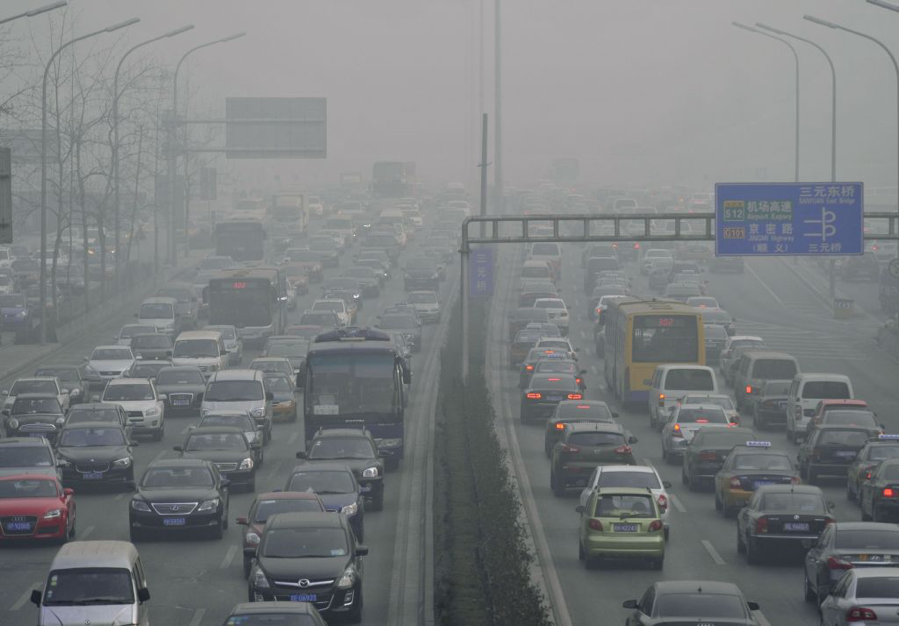
India’s extreme pollution is compounded by ever-increasing energy demands and the continued use of coal-fired power plants.
Point Energy Innovations (PEI) is working with developers to design buildings that are significantly more efficient and more resilient. Efficiency allows for smaller cooling systems, transformers and generators. We are providing strategic-level design services to a massive new community representing over 10 million sq. ft. in apartment buildings, office buildings, hospital, hotel, schools, a shopping mall, greenways and a park. Two other developer clients are each building one million sq. ft. office buildings.
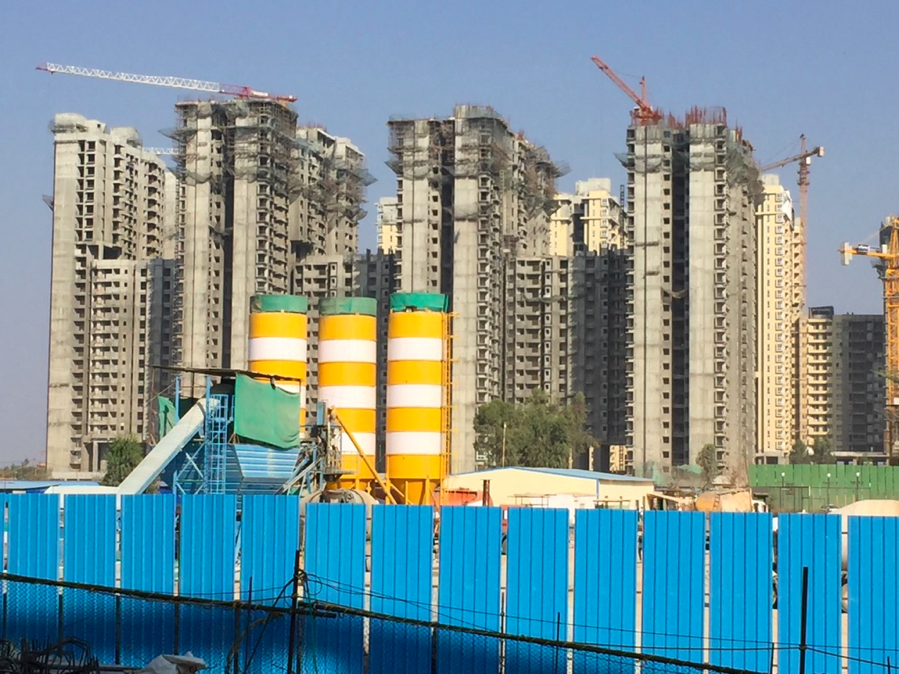
One of the two large-scale developments in India for which PEI is providing strategic design services, including specification of cooling, transformers and generators which require less power.
Many of the developers in India are new to the industry. In May I gave a talk to a young developers association; the members were all very sharp and mostly educated in top universities in the US or Europe. I was chatting with one of the attendees about his new residential project. When I asked the size, he casually responded 4.5 million sq. ft. Quite a surprise for me, but not uncommon in India. The need for housing and office space is immense. In contrast with the United States, a 4.5 million sq. ft. project is a once-in-a-lifetime opportunity and only for seasoned veterans.
Demand for commercial office space is driven by a mix of local and foreign corporations seeking to take advantage of the huge supply of software engineers and information workers in the country. When a company needs office space, they hire agents, usually international advisory firms, to represent them in their search. Typically, the agent issues an RFP to developers that include specific assurances for cooling systems and generator capacity, etc. It’s common to see clients requiring 8-10 watts per sq. ft. of generator capacity and 250 sq. ft. per ton of cooling system equipment sizing. These companies will go so far as to say if you don’t have this, then our client is not interested in leasing space your building.
With our projects, we have demonstrated an alternative, one whereby developers can bring their construction costs down by making more efficient buildings. We help clients select better windows, more efficient curtain walls, LED lighting, improved insulation and energy-efficient chilled water plants for HVAC systems. More efficient buildings require smaller chilled water plants, transformers and generators and are thus cheaper to build. These buildings only require 4-5 Watts per sf of generator capacity 400-500 sq. ft. per ton of cooling system capacity. This is half of what tenants and their agents require.
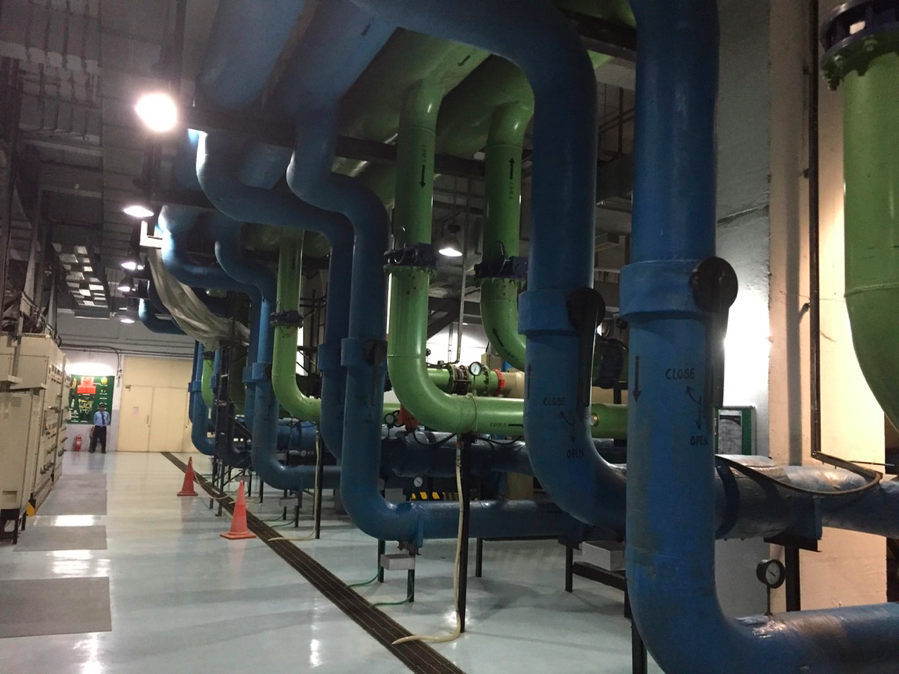
A highly-efficient chilled water plant in India, as specified by PEI for one of the large mixed-use developments under construction.
Herein lies the dilemma. The more affordable building is the more efficient building. The more efficient building should provide lower rents to tenants and help deal with India’s struggling power sector and air pollution. But developers are reluctant to go against the standards that agents for those tenants have set.
A new standard is needed. We have encouraged our developers to guarantee temperatures for cooling systems and uptime on electrical systems instead of actual sizes. And we have initiated conversations with two of the international real estate consulting firms with a broad reach in India. It will take some time to change this paradigm. Unfortunately, the paradigm is one which was developed in the US and Europe. All too often, in my work in the US, I see tenant agreements with power requirements based on Watts per sq. ft., and cooling based on sq. ft. per ton.
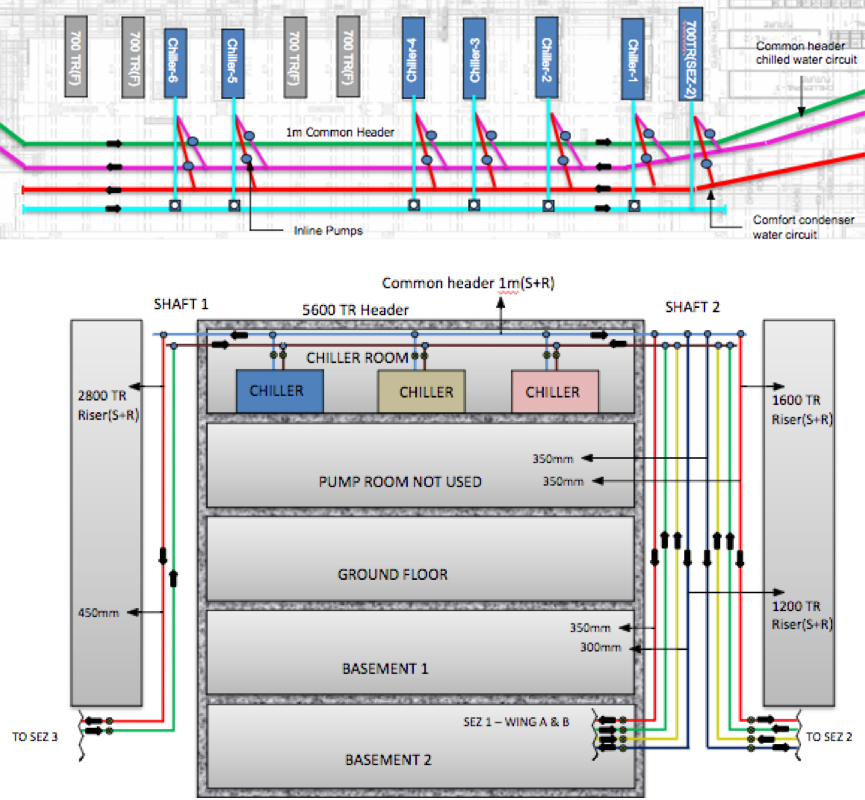
PEI’s design of advanced chiller plants results in lower power requirements.
Every building built in India during this construction boom that uses the current metrics thereby missing the benefits of efficiency, is a lost opportunity. The building sector needs to catch up to other sectors such as transport and renewables generation. India plans to ban all internal combustion cars within the next 13 years. Speaking at the World Economic Forum, Piyush Goyal, India’s Energy Minister, says, “Not a single petrol or diesel car should be sold in the country by 2030.” The government is actively encouraging photovoltaic-generated (PV) electricity. And utilities are not resisting, unlike in some parts of the U.S. PV systems on commercial buildings are being installed widely. Recent central utility scale PV bids have been at less than $0.02/kWh. This represents some of the lowest pricing in the world.
One thing Silicon Valley has taught me is: when there is gross market inefficiency, it’s only a matter of time before a new business model emerges. New leasing models and requirements based on delivering services – not size – need to become the norm. More efficient and lower cost buildings are a win-win for both developers and tenants alike and cannot come soon enough to the booming construction industry in India.
Finalists for the 2015 BOLD Awards
On 12, Nov 2015 | In PEI Blog | By Molly

An esteemed panel of sustainability leaders has announced the finalists for the inaugural BOLD Awards honoring leaders in the green building industry. The quality of this group of 20 finalists is a testament to how far we have come in green design, and it is exciting to see how so many committed individuals—those named here and many more—are boldly leading the industry to greater heights and toward the wider and wider adoption of green buildings.
For a list of the finalists and for more details about the award, please check out this guest blog post below from the organizers of the BOLD Award.
–Point Energy Innovations
20 Industry Leaders Selected As Finalists for The BOLD Awards 2015
Although buildings receive all sorts of awards, there’s a gap in the system. While beautiful, exciting buildings are created and operated every day by amazing individuals, there are few – if any – awards recognizing the people behind innovations and achievements in the green building space. To fill that hole, four innovative companies formed awards to make sure amazing leaders receive the credit they deserve for transforming the built environment.
The Building Optimizers Leaders and Disruptors Awards (The BOLD Awards) spotlights individuals and teams who drive the green building industry. These leaders are making our surroundings more intelligent, more comfortable, and more efficient. Formed in 2015 by Aquicore, Building Robotics, Enlighted and View, The BOLD Awards spotlight 4 categories of amazing leadership within sustainable buildings.
In its inaugural year, with nearly 100 entries of incredible leaders, the judging panel had quite a task selecting the finalists. The judges, comprised of cutting-edge changemakers including representatives from the United States Green Building Council, GreenBiz, McDonough + Partners and more, evaluated each nomination based on the following criteria:
- Environmental impact: What environmental impact has the nominee created or expected?
- Human impact: How did the nominee change comfort, productivity, or the general well-being of the community?
- Innovation: Did the nominees implement an innovative project?
After careful consideration of each nomination, the panel was able to narrow the amazingly talented list to these 20 influential leaders.
The Champion:
- Ralph DiNola, CEO, New Buildings Institute
- Eugenia Gregorio, Director of Corporate Responsibility, The Tower Companies
- Fulya Kocak, Director of Sustainability, Clark Construction
- Sara Neff, Vice President of Sustainability, Kilroy Realty Corporation
- Anthony Ravitz, Real Estate and Workplace Services Green Team Lead, Google
The Mentor:
- Mike Dieterich, Sustainability Manager, Renew and Sustain
- Lee Dunfee, Senior Vice President of East Engineering Operations, Cushman & Wakefield
- Sukanya Paciorek, Executive Vice President, Head of Asset Management, Brooklyn Navy Yard
- Russell Perry, Director of Sustainable Design, SmithGroupJJR
- David Summers, Principal, LA Mechanical Department Head, Glumac
The Inventor:
- Donnel Baird, CEO, BlocPower
- Davida Herzl, CEO and Co-Founder, Aclima
- Peter Rumsey, Founder and CEO, Point Energy Innovations
- Stacy H. Smedley, CEO and Co-Founder, SEED Collaborative
- Avideh Zakhor, CEO, Indoor Reality
The Unsung Hero:
- Eden Brukman, Founder and Principal, Concenter Solutions
- Sara Cederberg, Technical Director of LEED, United States Green Building Council
- Chateau Hough Urban Agriculture Zone in Cleveland, Ohio
- Wes Sullens, Green Building Program Manager, StopWaste of Alameda County
- William (Bill) Updike, Chief of Green Building & Climate Branch, Department of Energy & Environment, The Government of The District of Columbia
Congratulations to all the finalists!
To see which of these outstanding leaders receive The BOLD Awards, join the host companies on Wednesday, November 18 from 5:30-7:30 p.m at Lucky Strike – Gallery Place (701 7th Street, NW Washington, DC 20001). Awards will be announced at 6:00pm.
Throughout the event, you can enjoy complimentary beers and bites, challenge your colleagues to bowling matches or billiards, and celebrate Building Optimizers, Leaders and Disruptors leading our industries to a brighter future. Tickets are running out, so save your spot today.
For more information, visit www.theboldawards.com.

